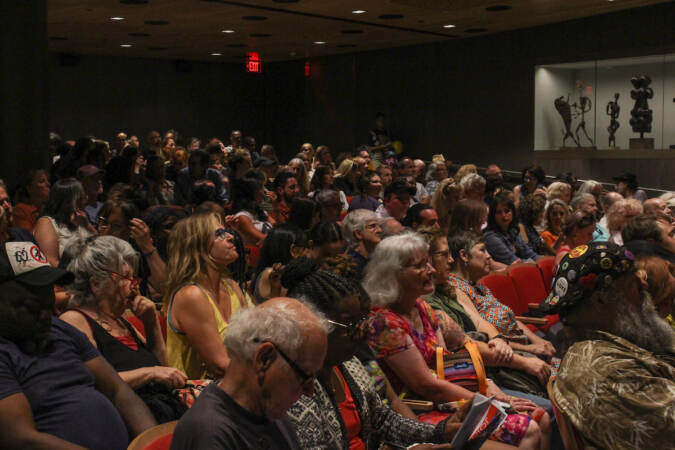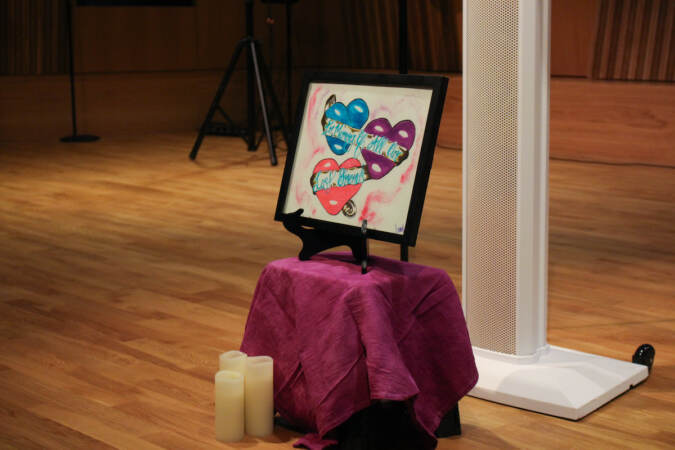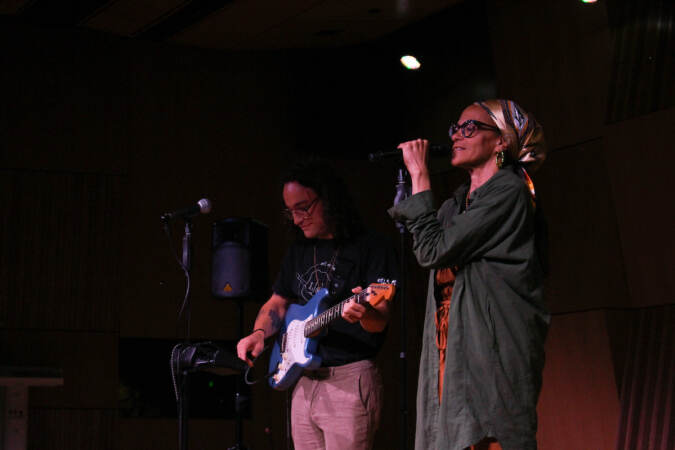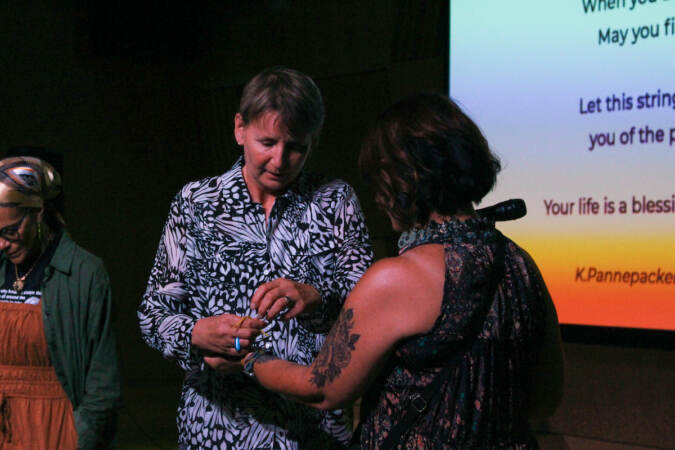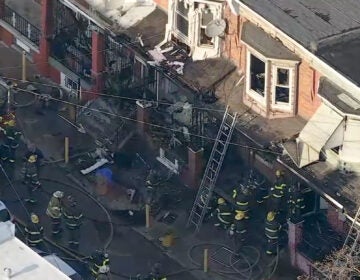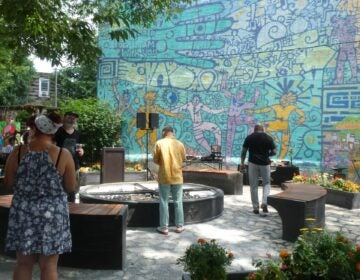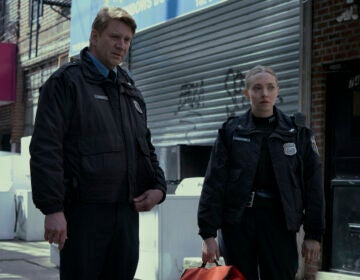Its closure in 2020 crushed a community. A new short documentary is bringing the Kensington Storefront back to life
Last Thursday’s film premiere proves just how beloved the Kensington Storefront was — and how it may be coming to life again.
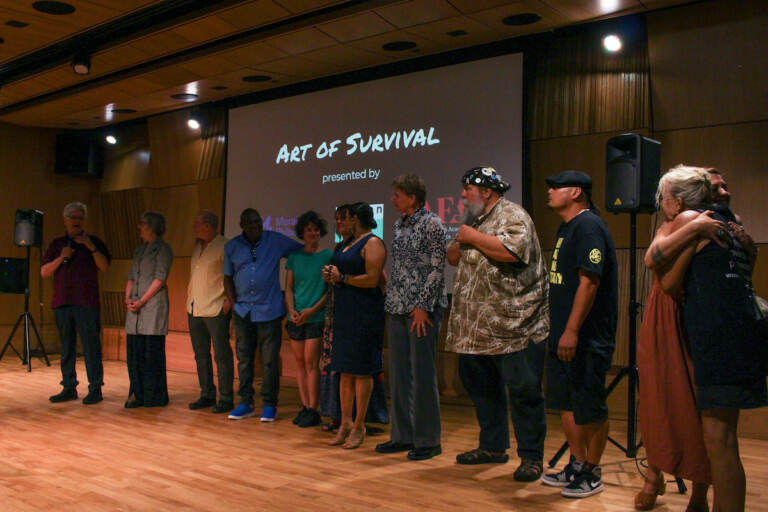
Following the screening, artists involved with the Kensington Storefront joined the directors to answer audience questions. All mentioned that their inspiration to be involved with the storefront stemmed from their experiences with addiction in Kensington, either firsthand or that of a loved one. (Gina E. Kim/WHYY)
While the Kensington Storefront has been defunct since 2020, the crowd gathered last Thursday at the Pennsylvania Academy of the Fine Arts is proof that many not only remember it but hold it dear.
About 260 people came to watch the premiere of “Art of Survival,” a short film that documents life at the Kensington Storefront. Originally an empty retail space at 2774 Kensington Ave., the storefront was a partnership between Mural Arts Philadelphia and the City of Philadelphia’s Department of Behavioral Health and Intellectual disAbility Services. It opened in 2017 and became known as a haven for arts programming and community healing until its closure in early 2020.
Co-directors Tony Heriza, Val Keller, and Jim Wasserman of Hidden River Films were initially drawn to the idea of telling a story of hope in a Philadelphia neighborhood infamous for its drug usage.
“We spent some time at the Kensington Storefront and were really affected by what was going on there, and it was the opposite of what was being told,” Heriza said. “And so we thought maybe we could tell that story, of people being active and hopeful, and investing in change.”
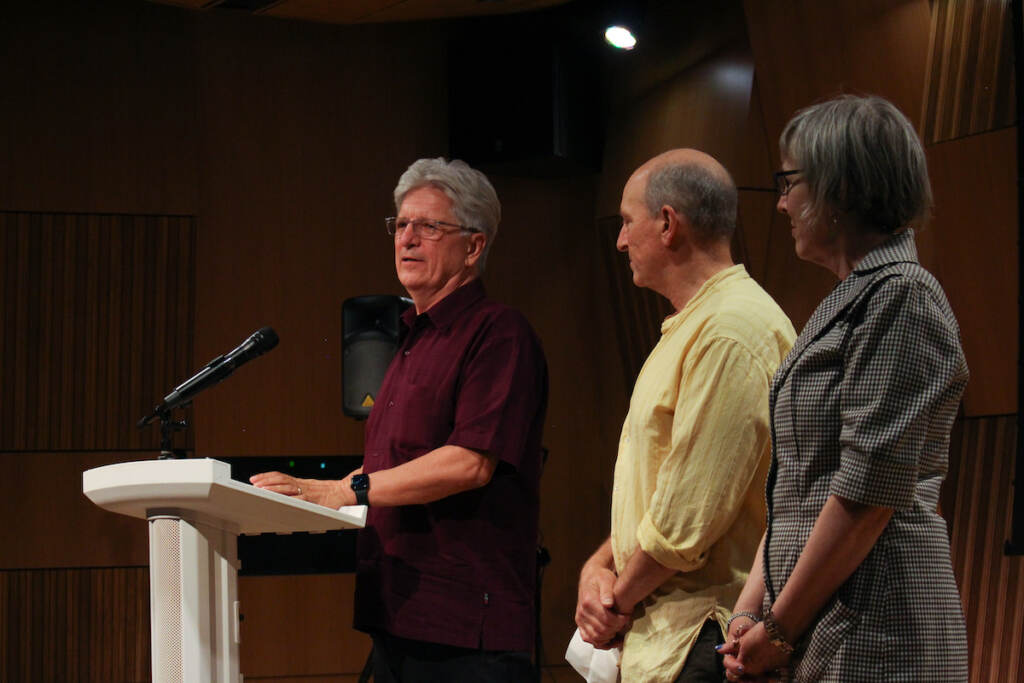
The team filmed at the storefront a few times a month over the course of two years. They were careful to gain permission of those filmed, and say that this approach in addition to the frequency of filming allowed them to gain trust with the residents who visited.
“We had to build some trust, and it wasn’t always easy,” Heriza said. “Cameras are not generally very warmly greeted in Kensington because they’re seen as kind of exploitative.”
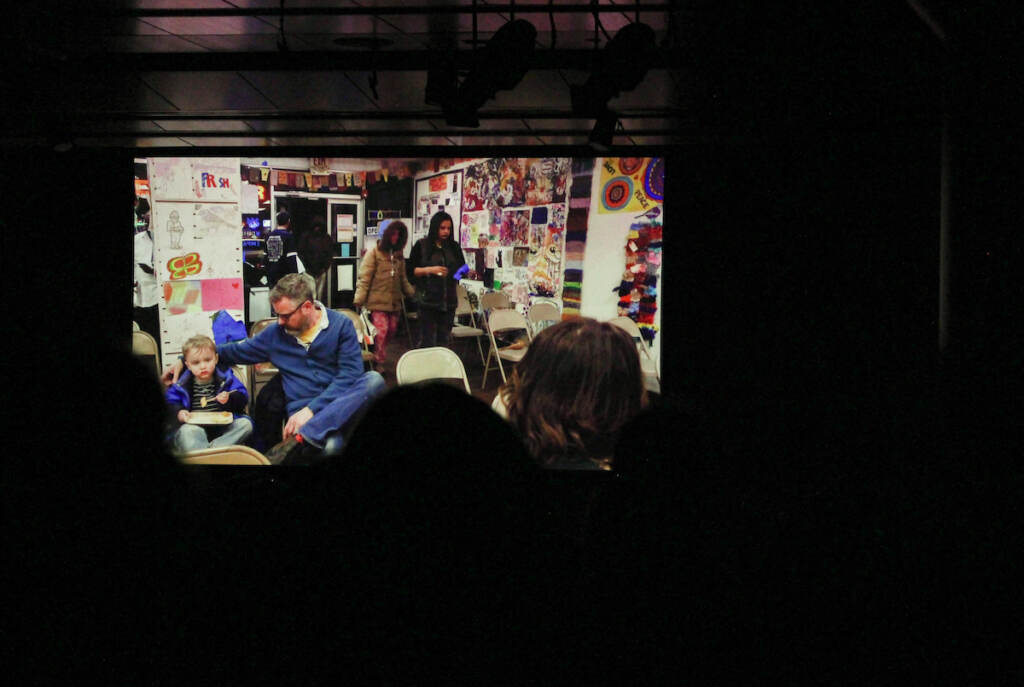
The premiere Thursday night gathered artists, community leaders, and Kensington residents who were involved with the Kensington Storefront. Kathryn Pannepacker and Lisa Kelley are artists who led art programs at the Kensington Storefront for most of its duration and currently work with Prevention Point, a nonprofit specializing in harm reduction services. Kelley, who grew up in Kensington, says the storefront carried a stigma for those who never experienced it, especially politicians.
“A lot of people who complained about us never stepped foot in that space, so they didn’t know what it was like,” Kelley said. “They didn’t know how we created a community and a family there of people who had no one, oftentimes.”
The film was briefly introduced by Jane Golden, executive director of Mural Arts Philadelphia, who gave a moving speech about the unique impact of the arts on intractable social issues.
“I have no idea why we even have conversations about why art matters. Because if you have an artist at the table, something changes,” Golden said. “When it comes to big issues … the creative path can sometimes get us out of where we were. And now when you see this film, you will see that art ignites change and transformation.”

Pannepacker also recited a poem written and inspired by the storefront to introduce the film.
“We invite you now to remember back when. To witness and feel what feels now, as you watch. And to imagine and dream moving forward. Because creativity and community matter, and a storefront can be the door to the heart,” Pannepacker said.
The film opened with Kensington residents speaking about loved ones they had lost. Gradually, scenes unfolded of daily life at the Kensington Storefront, with visitors painting, cautiously singing, and drinking coffee. Cinematic images of Kensington’s streets washed in sunset colors, are interspersed throughout. Though these scenes look almost idyllic, the film doesn’t gloss over Kensington’s struggles. In a memorable scene, a man rushes into the store, frantically asking if anyone can administer Narcan to someone directly outside. Sirens flash in the door’s reflection as people quietly return to paint on their canvases. Scenes like this remind viewers of the reality outside the storefront’s doors.
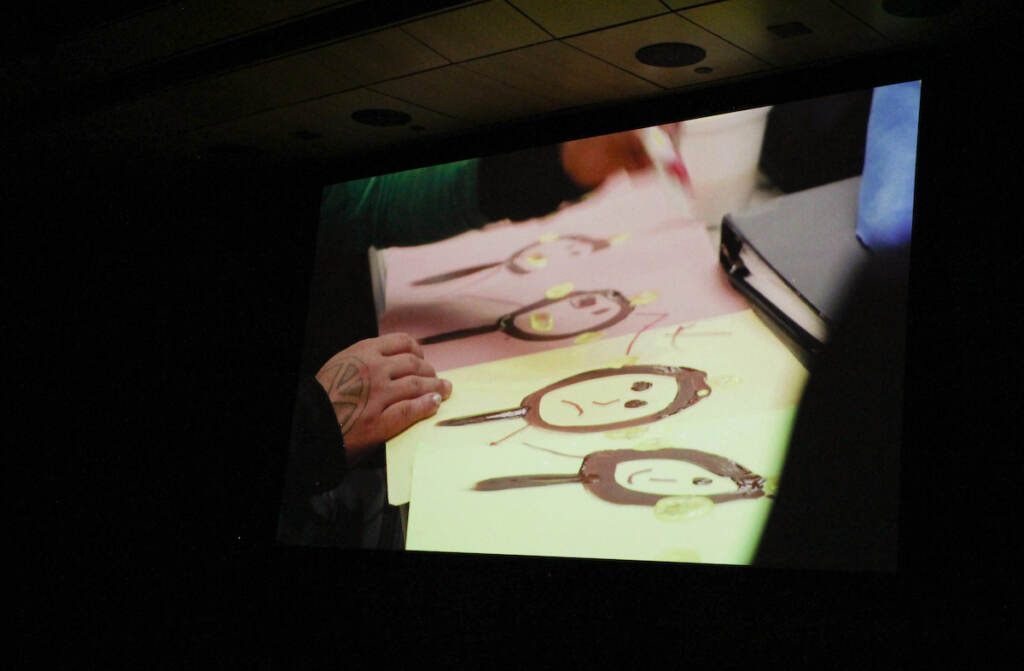
The event ended with a performance by Ursula Rucker and Miles Orion Butler, who led music programs at the Kensington Storefront when it was open. They performed songs and spoken word poetry as a love letter to the storefront and to Kensington itself.
Throughout the event, questions lingered: why did the storefront close, and what might take its place? While answers to the former are murky—a combination of the pandemic, lack of funding, and gentrification — Kensington resident Roz Pichardo with Operation Save Our City is bringing a second iteration of the storefront to life. She says it will be in the same location as the first.
“We’re not really sure exactly why it closed, but after a couple years and still being a resident there, we know what the need is,” Pichardo said. “And so I took a leap of faith and decided I was gonna open up a storefront again. In about a month or two, the storefront will be open.”
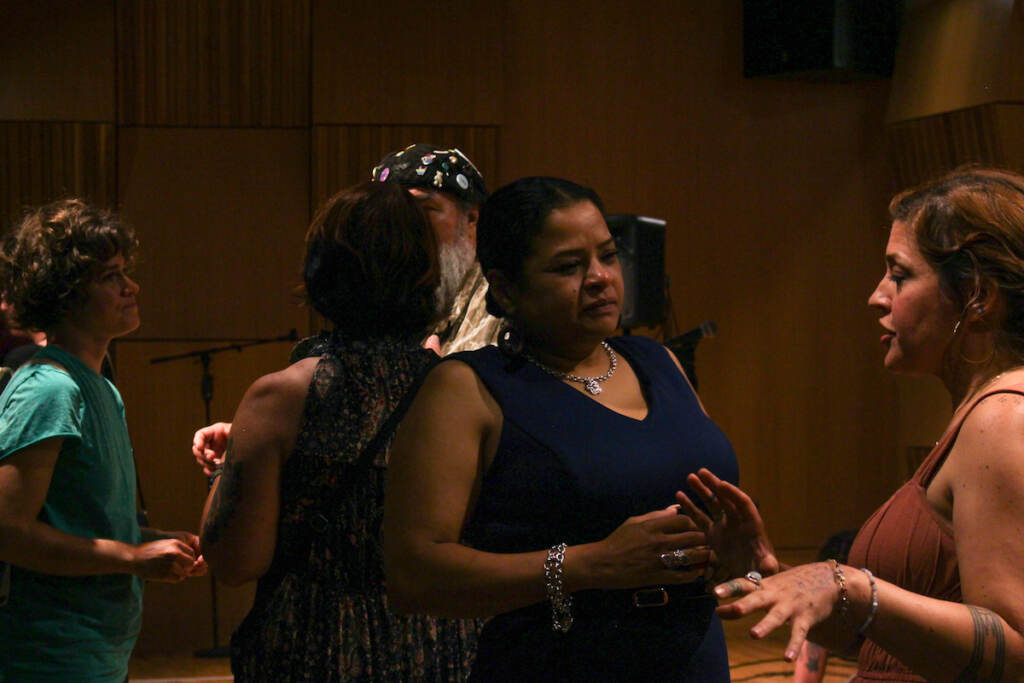
The film and the emotions of the people who attended were proof that art does in fact matter, and something that mattered happened in Kensington.

Get daily updates from WHYY News!
WHYY is your source for fact-based, in-depth journalism and information. As a nonprofit organization, we rely on financial support from readers like you. Please give today.


